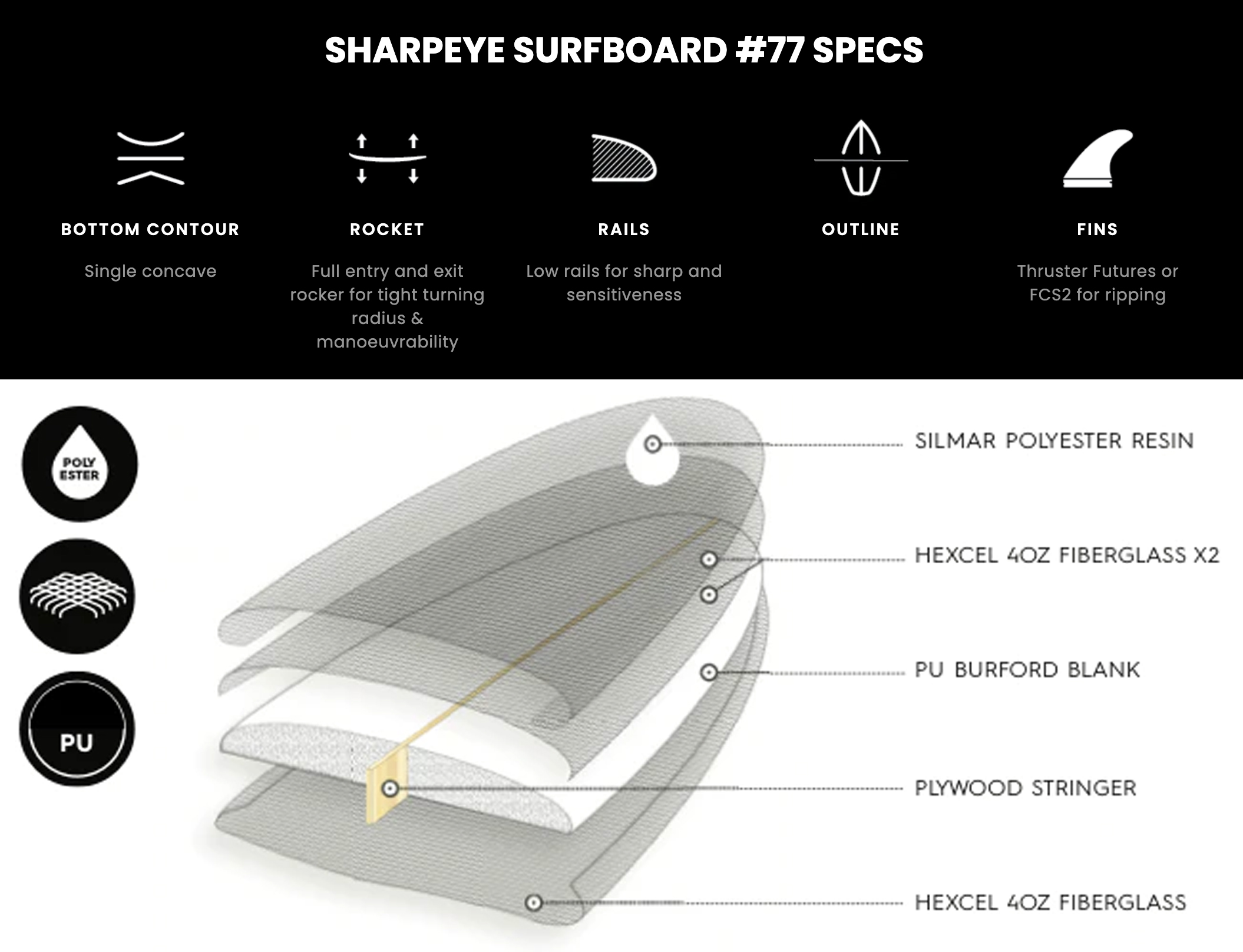Il modello #77 è la tavola scelta da Filipe Toledo durante la sua incredibile corsa attraverso J-Bay nel 2017, 2018 e 2019. Il #77 ha più rocker in entrata e in uscita rispetto al suo precedente modello Holy Toledo, insieme a un bordo più duro sopra le pinne e più concava verso il tail.
Definita come "La tavola più veloce che abbia mai surfato" da Filipe.
Questa tavola surfa meglio in buone onde incisive ed è consigliata solo a surfisti di livello intermedio ed esperto. Ordina il modello della stessa lunghezza della tua altezza.
| LENGTH | WIDTH | THICKNESS | VOLUME |
|---|---|---|---|
| 5'10 | 19 1/4 | 2 7/16 | 27.7L |
| 5'10 | 18 | 2 3/8 | 26.5L |
| 5'11 | 19 | ½ 2 | 29L |
| 5'11 | 18 3/4 | 2 7/16 | 27.3L |
| 5'4 | 18.25 | 2.25 22.3L | 22.3L |
| 5'6 | 18.50 | 2.25 23.3L | 23.3L |
| 5'8 | 18.75 | 2.32 24.9L | 24.9L |
| 5'8 | 18.25 | 2.25 23.6L | 23.6L |
| 5'9 | 18.75 | 2.38 25.9L | 25.9L |
| 5'9 | 18.50 | 2.35 25.5L | 25.5L |
| 6'0 | 19 5/8 | 2 9/16 | 30.2L |
| 6'1 | 19 | 2 5/8 | 31.3L |
| 6'2 | 20 | 2 5/8 | 32.6L |
| 6'3 | 20 | 2 5/8 | 33.8L |
| 6'4 | 20 | ½ 2 | 35.6L |
| 6'6 | 21 | 2 7/8 | 36L |

PU construction by Euroglass. The “P” gets its name from both the resin and the foam: polyester resin and the “U” comes from polyurethane foam . PU is the traditional surfboard construction since foam core surfboards were invented. It is still the most widely used construction method today. PU is often incorrectly referred to as “fiberglass” construction – the reason this is incorrect is because the same exact fiberglass cloth is used in both PU and Epoxy construction types, it’s the foam core and resin that soaks into the fiberglass cloth (and foam) that differ. While PU construction is generally slightly heavier and isn’t quite as strong as Epoxy construction, it tends to have a more reliable and predictable feeling whilst surfing. This is due primarily to a slower flex pattern and denser foam than epoxy construction, which basically causes less “surprises” and more predictability while surfing, especially when making hard or sharp turns. PU construction tends to be more naturally conducive to color work, especially translucent resin tints. PU is also a bit less sensitive to water infiltration and heat than epoxy construction.




